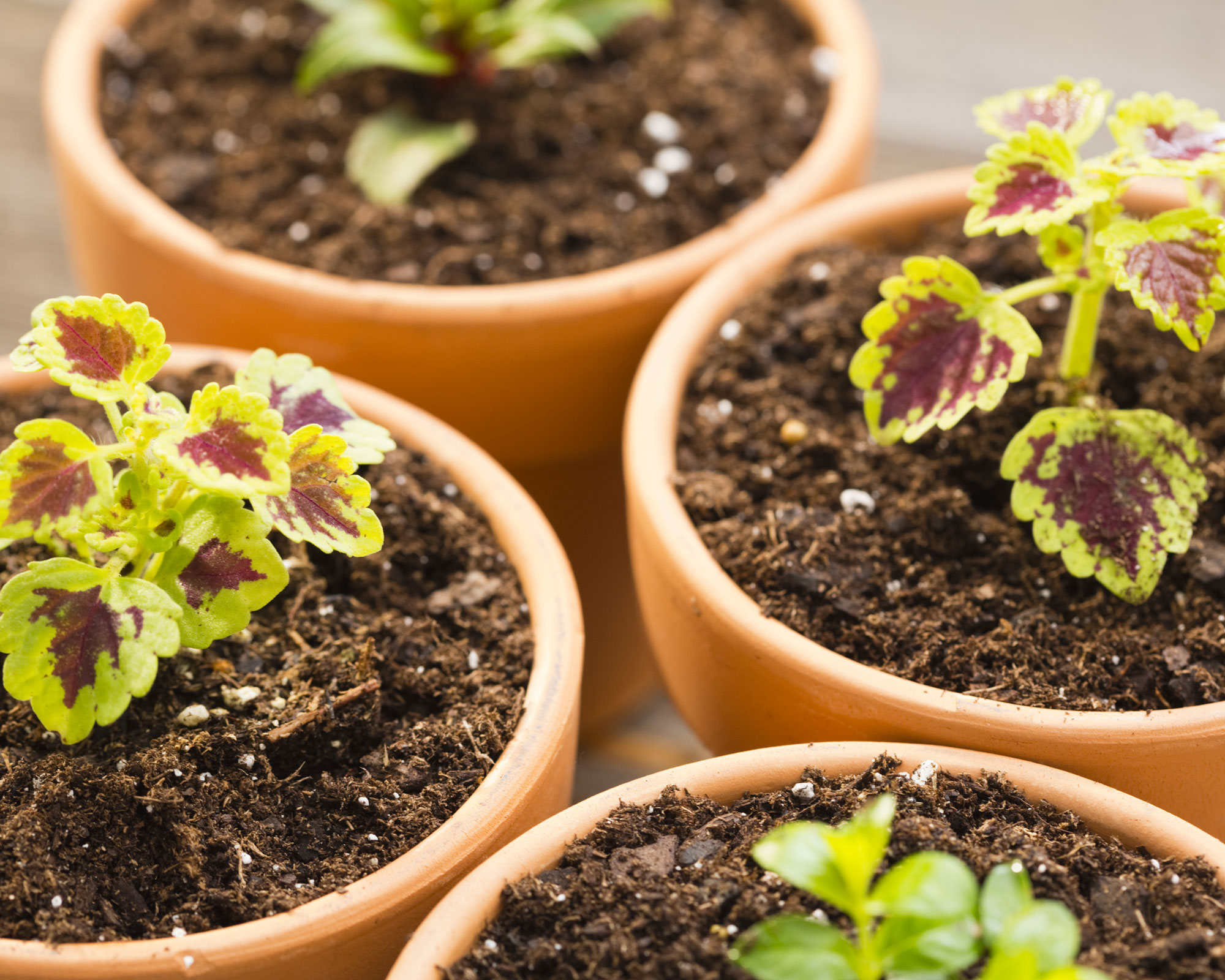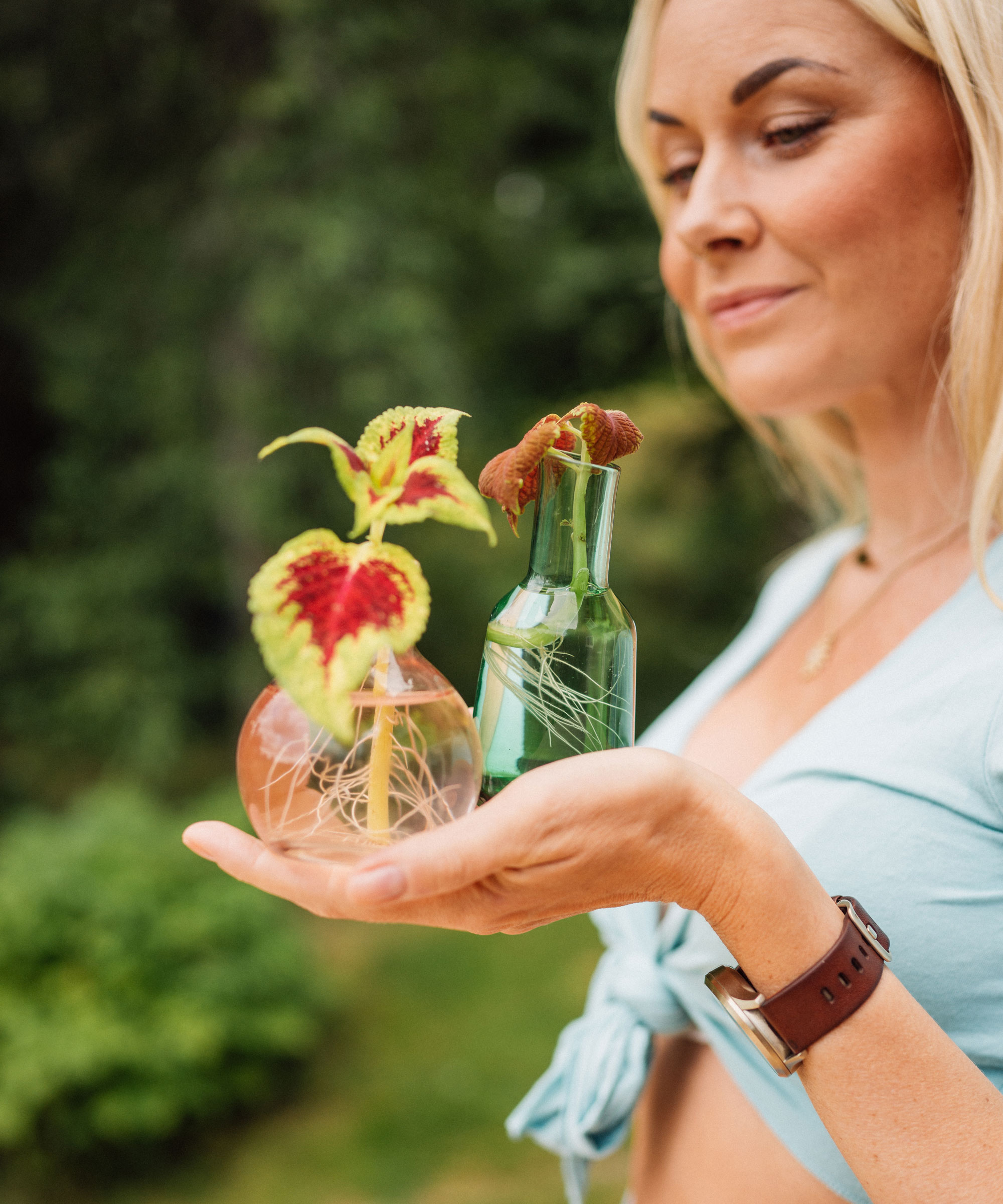Coleus propagation: how to get more of these easy-to-grow colorful plants
Follow this simple method for coleus propagation to multiply your plant collection and get more of these beauties for free


Coleus propagation is so easy to do as it's simple to take cuttings to get more of them. They're also easy to grow from seed if you want to add to your collection fast. With their attractive bold-patterned leaf markings and puckered, frilled edging these colorful plants make a great addition to your houseplant collection.
There are over 60 varieties of this striking foliage plant to choose from. As well as green the leaves come stippled in shades of pink, white, cream, yellow, maroon and purple. Coleus grow quickly too, often reaching full size in six to nine months. Some of the bigger varieties grow into small bushes, so it's best to plant them in the garden, but many other varieties thrive indoors if you give them the right conditions.
If you want more of the best indoor plants without the cost of buying new ones, one of the easiest ways to keep adding to your collection is to propagate. Luckily one mature coleus plant can be divided to make several new ones so you can fill your home with color for free.

Coleus thrive both indoors and out. Full of color and intricate patterns, the leaves of different coleus combine to make a stunning display in this collection from Beards & Daisies
Make coleus propagation easy with these 6 steps
Learning how to propagate coleus is super simple. 'Coleus plants are beautiful specimens, widely loved for their colorful, velvety foliage,' says Jo Lambell from houseplant specialists Beards & Daisies. 'And the good news? They're super easy to propagate.'
It's an economical way to get more plants. 'Transforming your space into an urban jungle can be an expensive habit, so if you want more coleus plants without heading to the nearest garden center, one of the easiest ways to keep adding to your collection is to propagate,' says Kate Lindley from houseplant experts Baby Bio.
Use our step-by-step guide to make sure you don't make any indoor plant mistakes and your propagation goes smoothly.
- Choose a stem that has multiple nodes and cut this from the plant. 'Simply find a stem that is around four to six inches long and use clean, sharp scissors to snip just above a leaf node, which is where leaves grow from the stem,' says Kate Lindley. 'Just make sure you don’t take a cutting that is too long, or it will grow leggy when potted up. You can also add a few cuttings to one pot to create a fuller looking plant straight away.'
- Once you've taken your cuttings it’s important to move quickly as they will soon wilt. 'Remove the lower leaves and keep the four leaves at the top,' says Jo Lambell. 'Pop the cuttings in a small jar in some water, ensuring at least two nodes are submerged.'
- Place on a sunny windowsill. 'Within a couple of weeks, your cuttings will have developed a good root system,' says Kate. 'Remember to keep the water fresh to prevent mold from growing, and don’t let cuttings stay rooting in the water for too long, or they won’t take to the soil when potted up.'
- In 2-3 weeks you will see roots forming and and your cuttings will be ready to be potted into well-draining houseplant compost. 'When the roots are around 3cm long, plant them in some potting soil,' says Jo.
- Once potted up, give your coleus cuttings a good drink of water mixed with a high-quality fertilizer, and place them in bright but indirect sunlight as the sun can scorch their delicate leaves. They like humidity so are one of the best plants for bathrooms and will work well as a kitchen plant too. 'You can also enclose the pot in a large plastic bag to create humidity, using sticks to keep the plastic from touching the leaves,' suggests Amateur Gardening plant expert John Negus.
- It usually takes around three to four weeks for a propagated plant to take root, so make sure that the soil isn’t allowed to dry out during this time by watering plants when needed. If you see any flower spikes it's a good idea to pinch them off as soon as they appear as they sap the plant of its energy and are insignificant looking anyway.

Taking cuttings from a coleus is so easy to do it makes sense to take several at the same time
Is it better to root coleus in water or soil?
The most common way to propagate coleus is through stem cuttings. This method is fast and effective, and can be done in either water or soil.
Plant your cuttings in soil and they’re less likely to suffer transplant shock as they develop stronger roots. Push the end of a pencil into the soil to create planting holes for your cuttings then gently pack the compost around them. Don’t bury them too deep though, and remember that the leaves shouldn’t be touching the soil.
'Take several shoot cuttings, remove the lower leaves and make a horizontal cut just beneath a stem joint. Insert into pots of seed and cutting compost,' is plant expert John Negus's preferred method for coleus propagation.

Propagate coleus cuttings in either compost or water
When it comes to coleus propagation in water that's pretty simple too. Place one or more stems into a clear glass jar filled with lukewarm water. Make sure none of the leaves are touching the water or they could rot.
'Water propagation couldn’t be easier and is a great technique that beginners can master,' says Kate Lindley. The main downsides are a higher chance of rot, and transplant shock. It's generally thought that the roots aren’t as strong when they develop in water.
Other houseplants that like being propagated in water include rubber plants, dracaena and fiddle-leaf figs. Most plants with long stems and nodes will soon produce a healthy root system.

Add a few coleus cuttings to small glass vases, pop them on a sunny windowsill and watch them thrive
When is the best time to propagate coleus?
The best time for coleus propagation is during their active growth period in early spring and summer. Fall is not a good time – as soon as cooler weather sets in, they’ll begin to die back, which makes rooting them much more difficult, whereas in spring the plants are still young. This gives them plenty of time to establish themselves before hot summer weather arrives.
Coleus are a wonderful addition to your indoor garden ideas and are guaranteed to become a firm favorite.

Coleus leaves come in wonderful range of colors
How do you propagate coleus from seed?
As well as propagating from cuttings coleus are easy to grow from seed. You can collect your own seeds from your plant then use them for coleus propagation. Or coleus seeds are widely available to buy online from Amazon. Once the petals drop off, allow the remaining pods to dry until brown. Then you can collect and dry them, and store for replanting in spring.
Coleus seeds need light and warmth to germinate. Sow seeds in a tray filled with seed compost, press them gently into the soil and do not cover. Place the pots on a sunny window sill to get them started. When your plants get two real leaves, it's time to transfer them to their own little pots. As plants develop multiple leaves and branches, pinch them right above a branching junction to give them shape and bushy growth. Transfer to larger pots as necessary.

Coleus scutellarioides is a species of flowering plant

Lifestyle journalist Sarah Wilson has been writing about gardens since 2015. She's written for Gardeningetc.com, Livingetc, Homes & Gardens, Easy Gardens and Modern Gardens magazines. Having studied introductory garden and landscape design, she is currently putting the skills learned to good use in her own space where the dream is establishing a cutting garden.
